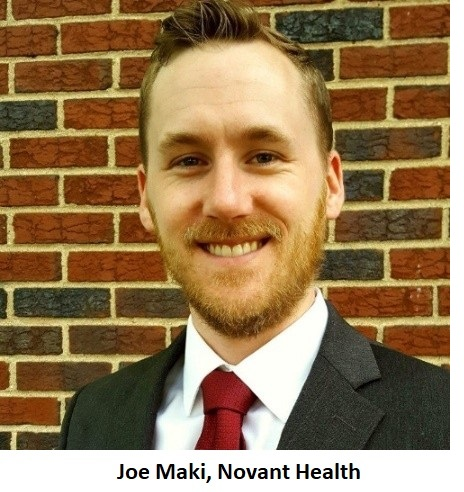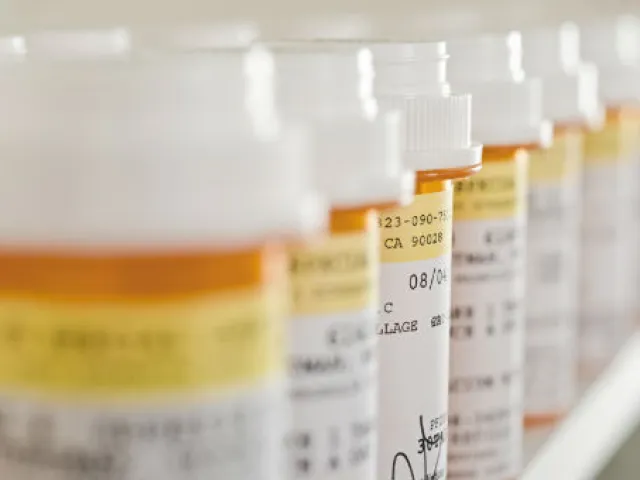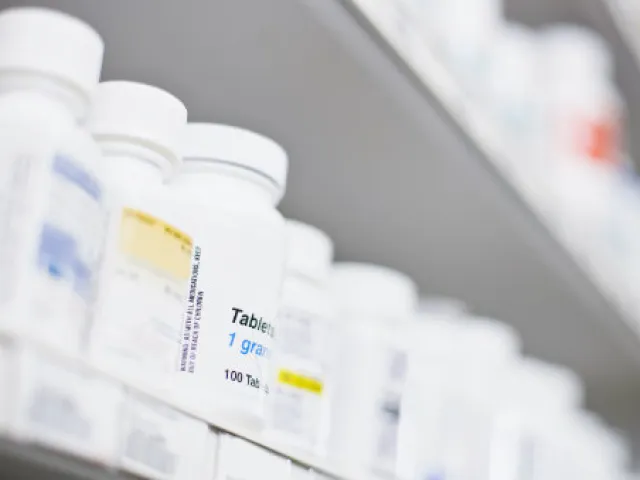Table of contents
The Drug Supply Chain Security Act (DSCSA) requirement that pharmacies receive only serialized products from suppliers has been in effect since November, 2020—and represents a major opportunity for health systems to achieve end-to-end inventory visibility, improve recall management processes, and reduce the impact of drug shortages. And Joe Maki is an early mover in the effort to make that future a reality.
 As Senior Director of Pharmacy Business Operations at Novant Health—a large network of hospitals, physician clinics, and pharmacies spanning more than 630 locations in four states—Maki is well acquainted with the problems that siloed systems and a lack of inventory visibility can create for health systems. In this interview, Maki explains how Novant is tackling tough challenges like drug shortages and recall management—and why he thinks DSCSA and a serialized product data repository will ultimately provide the visibility needed to transform his business.
As Senior Director of Pharmacy Business Operations at Novant Health—a large network of hospitals, physician clinics, and pharmacies spanning more than 630 locations in four states—Maki is well acquainted with the problems that siloed systems and a lack of inventory visibility can create for health systems. In this interview, Maki explains how Novant is tackling tough challenges like drug shortages and recall management—and why he thinks DSCSA and a serialized product data repository will ultimately provide the visibility needed to transform his business.
What are the biggest challenges to managing inventory across a diverse organization like Novant?
Joe Maki: The first is tied to the complexity of the organization. Our procurement team is responsible for inventory management across all our hospitals, pharmacies, specialty infusion sites, and physician clinics. We have lots of different types of inventory to deal with and many staff members ordering or receiving products. Many different issues arise from that around standardization of processes and ensuring we are compliant with state and federal regulations. Beyond that, actually keeping track of the inventory, managing expiration dates and recalls, and trying to figure out where every lot number for a product is in the system is extremely challenging. We don’t have any visibility into lot numbers.
What is motivating you to stay focused on solving these challenges?
Maki: Our big focus is on margin because, as a not-for-profit, that margin gets reinvested into the care of our patients. We need to make sure we are being good stewards of the business. With constant struggles like managing drug shortages and making sure we have the right products on hand without having too much capital tied up in inventory, it’s a line we have to walk. That is why a big focus for me is partnerships with manufacturers and looking at ways to work with them around contracting and drug shortage management.
How will serialization help health systems improve recall management?
Maki: The DSCSA compliance mandates will help improve the recalls management process because of the things we need to put in place to manage serialization. We’ll have much better visibility and overall ability to manage recalls because we will have the capabilities to at least see what we are receiving at the lot level. At Novant, we have a pretty good process and a good relationship with the vendor who provides recall notifications within the four walls of our hospitals. As the supply chain continues to be serialized, a big opportunity is incorporating more accurate recall management at the lot level—and then improving our ability to respond to recalls outside of the four walls of the hospital or pharmacy in locations like physician clinics and infusion centers, where I don’t have pharmacy staff. Responding to recalls there is certainly challenging. We need to find a way to make it easy.
How is Novant tackling drug shortages?
Maki: We have good visibility into usage rates, and we have great relationships with our physicians and other stakeholders. When it comes to changing utilization patterns to respond to a shortage, we can pivot very quickly to alternative products or stop using a certain product to conserve it for critical occasions. We are starting to have conversations with manufacturers around improving our allocation processes and direct procurement relationships. Currently, we are at the whim of our distributors in terms of how they manage allocations of products that are on shortage and how they are distributed. There is a real opportunity to work directly with manufacturers to secure those allocations and—even more forward thinking—lock in a certain amount of volume over longer terms to help them plan for that in their supply chain.
How will digital networking help solve the drug shortage problem?
Maki: Over the next few years, I expect serialization within the context of the digital supply chain will create significant opportunity to improve the handling of drug shortages. Health systems and pharmacies will be able to create partnerships where information on usage rates can be exchanged real-time throughout the supply chain. This information could be used to adjust production schedules or safety stock quotas at the manufacturer level; drive ordering and on-hand determination for wholesalers; and provide indicators of an impending shortage at sites like ours that are closest to the patient. Novant Health will be actively seeking partners who are engaged in developing solutions to the very real drug shortage problem.
How do you see supply chain operations evolving at Novant between now and 2023 when the final phase of DSCSA goes into effect?
Maki: Number one is having a very high percentage of our inventory visible in real time, so we know exactly how many of drug X we have down to the lot level and where it is throughout our entire health system, with clean interoperability to move it around as needed. Number two would be having a different kind of relationship with manufacturers when it comes to procurement of pharmaceuticals, and different relationships with our distributors and group purchasing organizations as we look for ways to lower costs and improve supply.
How is Novant working with TraceLink?
Maki: Novant Health sees TraceLink as a really important partner for where our supply chain is heading. As I began looking at what DSCSA would mean, I saw a lot of complex changes that would be needed in my supply chain. I wanted a partner that could help us address those complex changes. Having a partner is important because we don’t necessarily know how things are going to look. The more I can do to influence those solutions to better meet our needs, the better off we are going to be as a health system. As we started conversations with TraceLink, we discovered a great appetite on both sides to develop solutions together.
Article originally published February 2020. Updated June 2021.







